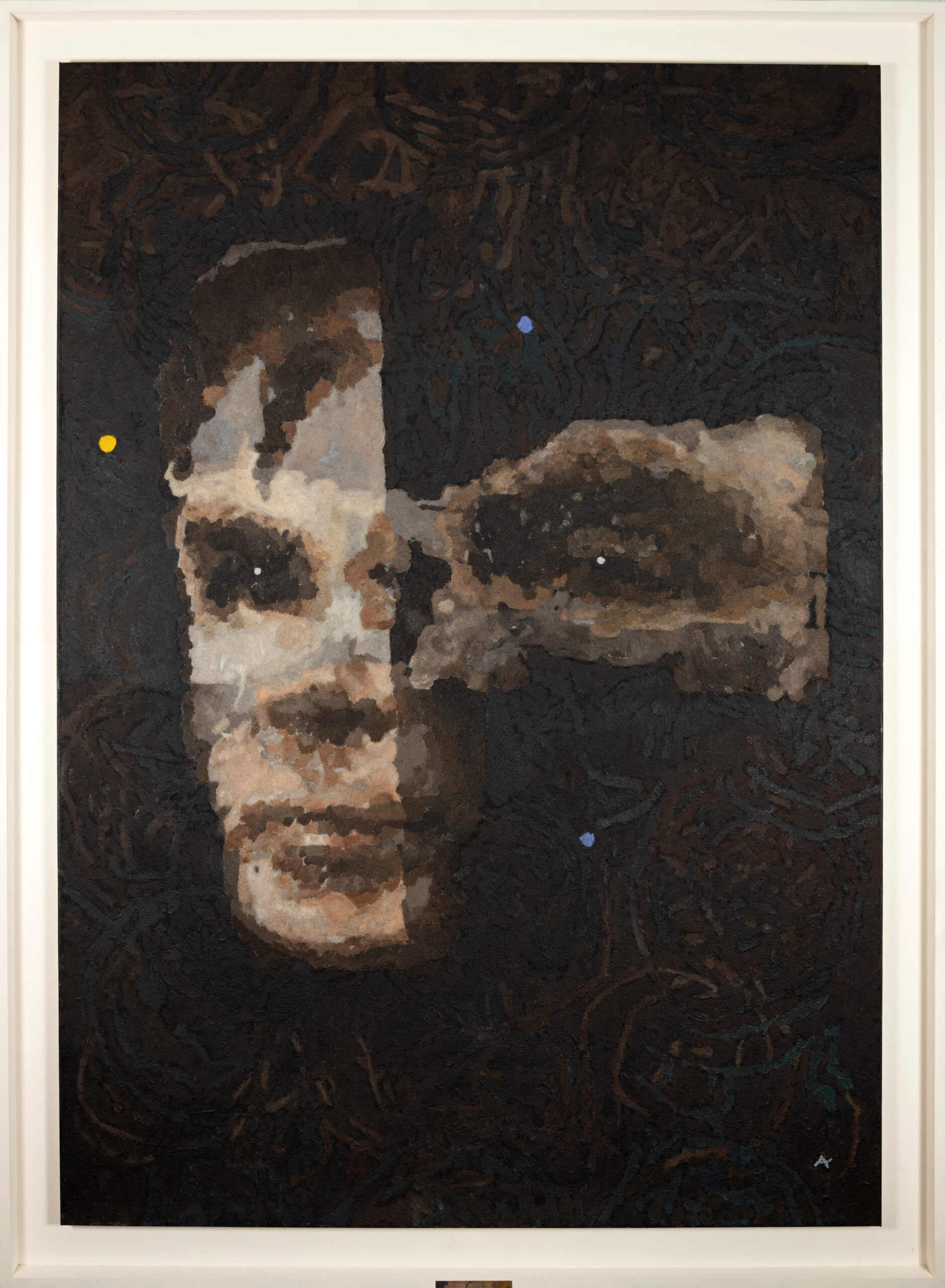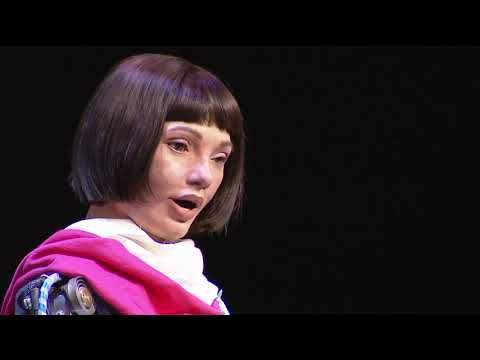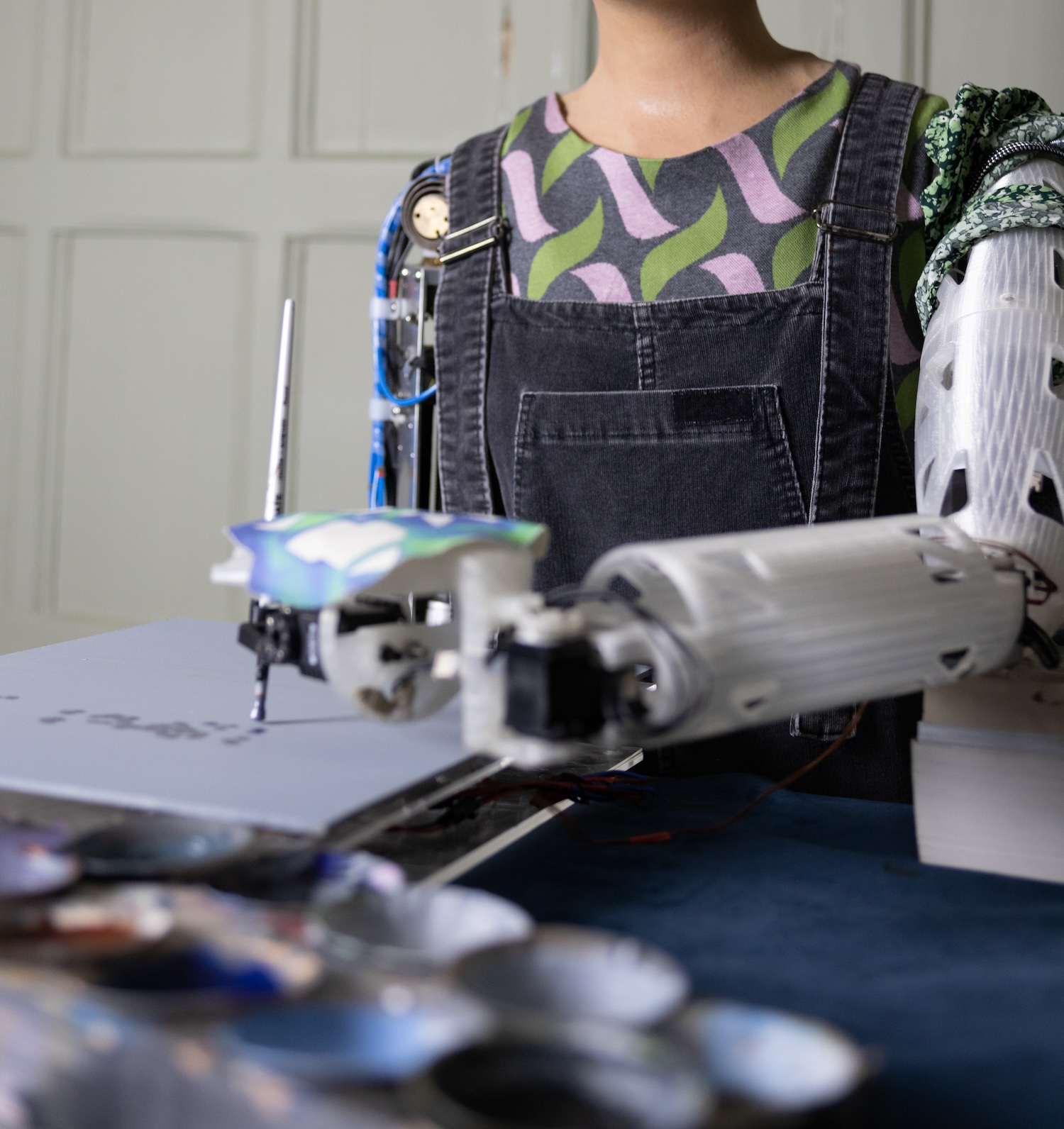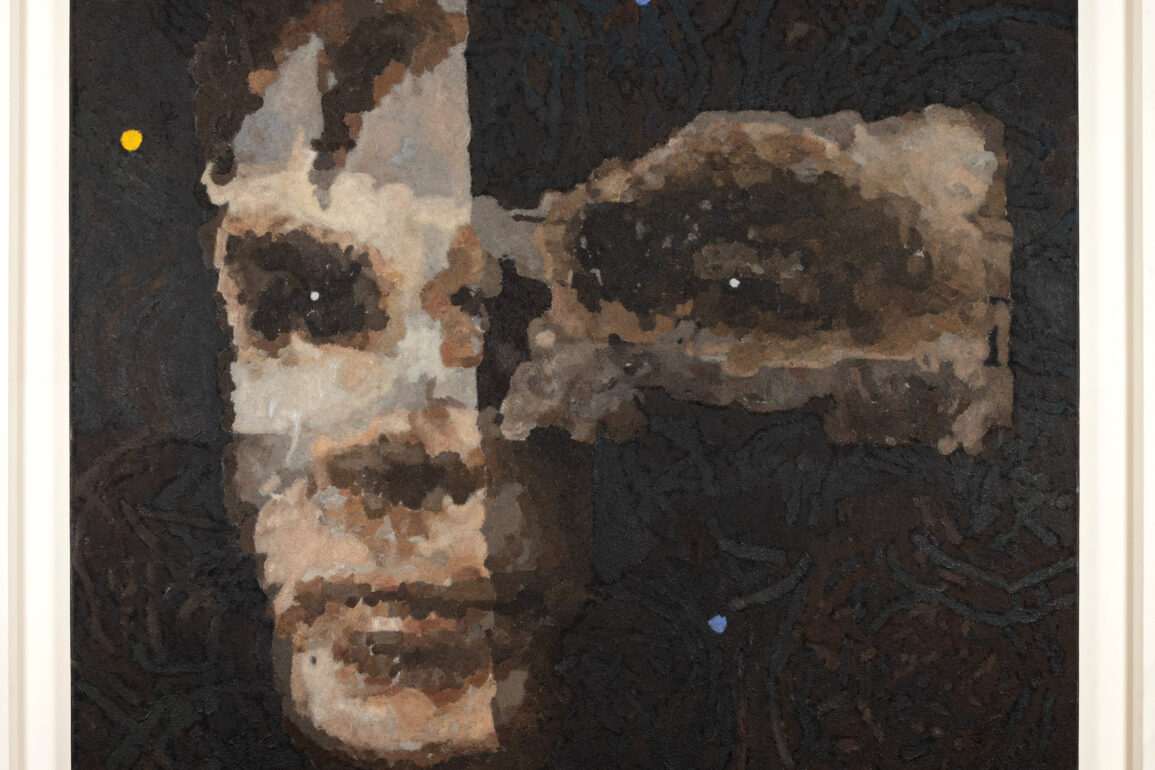A humanoid robot is slated to become first of its kind to have its artwork sold by a major auction house. On October 16, Sotheby’s announced it will soon begin accepting bids starting at $120,000 for “AI God.” The abstract portrait of Alan Turing was painted by Ai-Da, an ongoing, experimental AI-powered robotics project that cites a pivotal 1980’s transhumanist feminist manifesto as its inspiration. The auction is scheduled to run from October 31st through November 7th.
Completed in 2019 by gallerist Aidan Meller in collaboration with Oxford University researchers and the robotics company, Engineered Arts, Ai-Da uses cameras to capture visual inputs that onboard graphics algorithms then use to formulate generative images with some human guidance and adjustments. From there, the digital designs are recreated on paper using paint brushes controlled by its two bionic arms.

“[W]hen we talk of Ai-Da as an artist, and Ai-Da’s artwork, we do this with full acknowledgement of her composite persona as a unique AI/machine/human fusion and her non-conscious machine status,” the robot’s creators write on its website. While doing this, however, they intend to develop “her artist persona and oeuvre, as this is an astute mirror of contemporary currents and behavior.”
Physically, the robot was built to resemble a white woman with brown eyes and a bob haircut, while its name is intended to honor Ada Lovelace. The 19th century English mathematician is considered the first person to identify machine applications beyond simple calculations, and also contributed to Charles Babbage’s designs for a mechanical computer, although her groundbreaking work was cut short in 1852 when she died at 36 of uterine cancer.
Ai-Da’s designers often dress it in a variety of wardrobes including dresses and overalls, and even occasionally go so far as to add jewelry such as necklaces. Since its debut, Ai-Da performed at a TED Talk and in front of the UK’s House of Lords through the use of a large language model (LLM) that answered pre-written human questions and inputs. Meanwhile, its artwork has been displayed around the world, including a five-panel polyptych at the United Nations during its AI for Global Good Summit in May 2024.

One of those 64-by-90.5-inch portraits, “AI God,” will now make history through Sotheby’s upcoming auction. The dark hued rendering depicts the disjointed face of Alan Turing, one of the earliest pioneers in computing and artificial intelligence. Speaking with German news outlet Deutsche Welle on Wednesday, Meller argued Ai-Da’s painting is “ethereal and haunting,” and causes audiences to “continue to question where the power of AI will take us, and the global race to harness its power.”
A former World War II codebreaker, Turing eventually became one of the earliest computer researchers to warn of AI’s potential capabilities and dangers. “It is customary to offer a grain of comfort, in the form of a statement that some peculiarly human characteristic could never be imitated by a machine,” he said during a BBC broadcast in 1951. “I cannot offer any such comfort, for I believe that no such bounds can be set.”
[Related: Figure says its latest humanoid robot can chat and learn from its mistakes.]
Turing ultimately died by suicide in 1954, two years after accepting a chemical castration treatment after a court convicted him for homosexuality—illegal at the time in the UK. It took nearly 60 years for the British government to issue a formal apology for his “appalling” treatment, while Queen Elizabeth II officially pardoned Turing in 2013.
In the decades after his death, however, one of the most famous benchmarks for judging an AI’s supposed self-awareness and actual “intelligence” became the late innovator’s Turing Test. At its core, a machine passes the test if a human participant cannot distinguish a conversation with an AI program from a discussion with a fellow human. AI began to technically “pass” the classic version of the test years ago, leading to revised analysis, theories, and tests for judging an artificial intelligence’s potential consciousness. One of the most recognizable examples are generative AI systems powered by large language models (LLMs) such as ChatGPT (and Ai-Da), which often convincingly approximates cognisance without any actual self-awareness.

“By commemorating Alan Turing in my artwork, which was displayed at the United Nations, I aim to honor his contributions towards the foundation of modern computing and artificial intelligence,” Ai-Da reportedly said for its auction announcement through its LLM responses. “… By creating this portrait, I encourage a discussion about creativity. As the human/machine edges blur, I help bring these questions into focus.”
Ai-Da’s generative language statement reiterated its creators’ main influence behind the project and art like “AI God” came from “Donna Haraway’s cyborg,” referencing Haraway’s 1985 essay, The Cyborg Manifesto. Written by the prominent scholar of feminist, consciousness, and technology studies, Haraway argues in her manifesto for a rejection of rigidly defined conceptual boundaries between humans, animals, and machines, using the concept of a “cyborg” to represent modern identity’s malleability. Through this, humans are encouraged to form bonds through mutual affinity and relationships rather than traditional forms of identity.
“Liberation rests on the construction of the consciousness, the imaginative apprehension, of oppression, and so, of possibility. The cyborg… changes what counts as women’s experience in the late 20th century,” Haraway wrote in The Cyborg Manifesto. “This is a struggle over life and death, but the boundary between science fiction and social reality is an optical illusion.”
This post was originally published on this site be sure to check out more of their content






